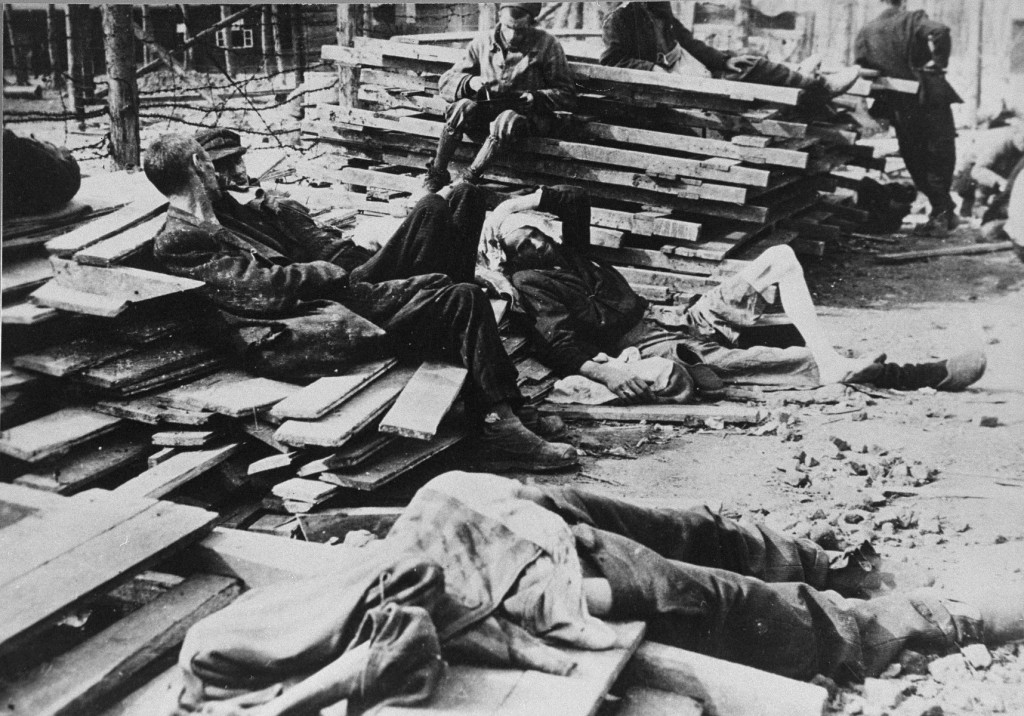
The 6th Armored Division during World War II
In 1985, the United States Holocaust Memorial Museum and the US Army Center of Military History began a program to honor US Army divisions that took part in the Allied liberation of Nazi camps. The US Army Center of Military History defines a liberating division as one whose official records show its presence at a camp within 48 hours of the first soldier’s arrival. The 6th Armored Division is among the 36 US divisions that have been recognized to date.
Key Facts
-
1
US, British, Soviet, and Canadian troops encountered concentration camps and other sites of Nazi crimes as they advanced across Europe in 1944 and 1945.
-
2
The Allied soldiers liberated sick and starving camp prisoners from Nazi tyranny. They also provided them with food, clothing, and medical aid.
-
3
The United States Holocaust Memorial Museum and the US Army Center of Military History have recognized 36 US divisions for their role in the liberation of Nazi camps.
6th Armored Division Campaigns during World War II
On July 18, 1944, the 6th Armored Division landed on the Normandy beaches, some six weeks after the D-Day invasion of western Europe. The "Super Sixth" was subsequently assigned to General George S. Patton's Third Army, and took part in the Allied counteroffensive to stop the German advance during the Battle of the Bulge. At the end of March 1945, the unit crossed the Rhine River and moved quickly into central Germany.
The 6th Armored Division and the Liberation of Buchenwald
After fording the Werra River and advancing deeper into the German state of Thuringia, the 6th Armored Division overran the Buchenwald concentration camp on April 11, 1945. When the US troops arrived, the SS guards had fled and the prisoners had taken control of the camp. Several inmates had left the camp in the interim in order to contact the US troops in the vicinity. They approached members of the 6th Armored Division with information about the camp. The first US troops arrived in Buchenwald shortly thereafter, to be greeted by the cheers of the liberated prisoners. The "Super Sixth" reported that some 21,000 inmates were still in the camp. In the days preceding the camp's liberation, the SS had evacuated thousands of inmates on death marches.

Recognition as a Liberating Division
The 6th Armored Division was recognized as a liberating unit by the US Army's Center of Military History and the United States Holocaust Memorial Museum in 1985.
6th Armored Division Battle Casualty Figures
Hundreds of thousands of US servicemen and women died or were wounded in the fight against Nazi tyranny.
The total number of battle casualties for the 6th Armored Division in the European Theater of Operations during World War II was 4,670. In this case, “battle casualties” includes all personnel who were unable to fight in battle because they were wounded, missing, captured, or killed.
Among the battle casualties suffered by the 6th Armored Division, there were 993 deaths.
6th Armored Division Nickname and Insignia
"Super Sixth" became the nickname of the 6th Armored Division while the division was training in the United States, apparently to symbolize the division's spirit.
The patch or insignia of the 6th Armored Division is shaped like a pyramid and represents power. In the center of the patch are three intertwined symbols in black: a tank tread, a cannon, and a lightning bolt. The tank tread symbolizes mobility. The cannon represents firepower. And the lightning bolt stands for shock action (a quick, offensive, military attack that surprises the enemy). The three symbols are placed against a tricolored background comprised of yellow, red, and blue. These colors represent key components of an armored division: cavalry (yellow), field artillery (red), and infantry (blue). The division number appears in black near the top of the pyramid (against the yellow part of the patch).

Footnotes
-
Footnote reference1.
In the aftermath of World War II, the US Department of the Army compiled casualty figures for US Army personnel. The US government published these figures in 1953. The report listed casualty numbers for the US Army for the period from December 7, 1941 (Pearl Harbor) through December 31, 1946, when US President Harry S. Truman officially declared the end of war hostilities. Army Battle Casualties and Nonbattle Deaths: Final Report, 7 December 1941-31 December 1946, Prepared by the Statistical and Accounting Branch, Office of the Adjutant General, Under the Direction of the Program Review and Analysis, Division of the Comptroller of the Army, O.C.S., (Washington: Department of the Army, 1953), p. 3-4, 84-89.
Critical Thinking Questions
What challenges did Allied forces face when they encountered the camps and sites of other atrocities?
What challenges faced survivors of the Holocaust upon liberation?

